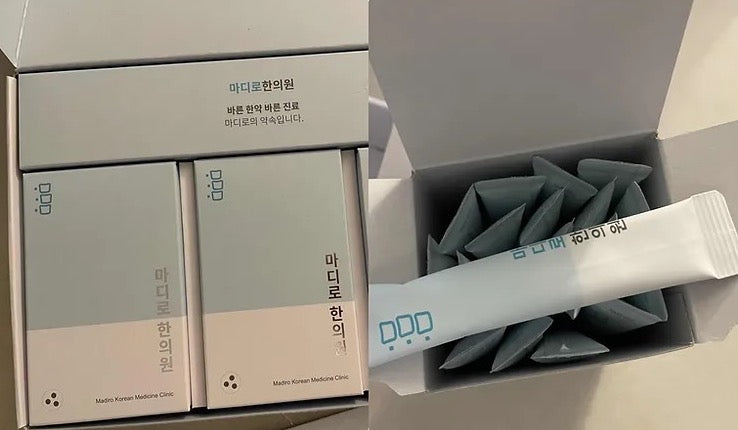
Soonchunhyang University Seoul Hospital(SCH) - Health Check-up

Health check-ups are the most fundamental way to check our health status and identify risk factors in advance to prevent diseases. Himedi has personally experienced the health examination program at the 'Health Promotion Center' of Soonchunhyang University Seoul Hospital in Hannam-dong, Seoul.
Health Check-up Procedure
I chose the 'Basic Examination Program' among the various examination programs at the 'Health Promotion Center.' In addition to the basic examination items, you can add or remove desired tests.
① Pre-questionnaire

Before the actual examination, you fill out a questionnaire about your health status, living habits, etc.
② Dressing Room & Locker Room

Before the examination, you change into a gown and slippers provided by the hospital. There are sanitizers inside the dressing room, and gowns are neatly organized in the locker room. Although a small detail, the clean and well-maintained appearance of the dressing room enhances a pleasant feeling of hospital usage for patients.
③ Physical Measurements

Physical measurements include height, weight, body mass index (BMI), body composition analysis, blood pressure, pulse, etc. It is the most basic step of the health examination and provides clear physical indicators.
④ Blood Test & Urinalysis

Next, a blood test is performed. A skilled nurse efficiently conducts the blood collection. Various information can be obtained through this test, including diabetes, hyperlipidemia, liver function, hepatitis (A, B, C), kidney function, thyroid function, rheumatoid factor, inflammation response, tumor marker tests (liver cancer, colon cancer, pancreatic cancer, breast cancer, cervical cancer, ovarian cancer), etc. It's amazing to think that so much information can be obtained from blood.
A container for urine collection is also provided in the blood collection room. You can collect urine in the restroom and submit it to the nurse. Through the urinalysis, information such as proteinuria (protein, glucose), acidity (pH), specific gravity (urine SG), ketones (urine ketones), urobilinogen (urobilinogen), and occult blood can be obtained.
⑤ Electrocardiogram (ECG)

The electrocardiogram is the most basic test to check heart health. It takes about 5 to 10 minutes and is relatively simple. The experienced medical staff attaches measuring devices to the examinee's body, and the examinee simply lies comfortably while the ECG is measured.
⑥ Chest X-ray

An X-ray is taken in the chest X-ray room. To ensure a clear chest X-ray, the medical staff assists the examinee in taking the correct posture, and during the X-ray, the examinee needs to hold their breath. This ensures a well-interpretable result and can help detect tuberculosis, heart disease, and tumors in the chest.
⑦ Ophthalmological Examination

The ophthalmological examination room is equipped with equipment to check eye health, including visual acuity, intraocular pressure, and fundus examination. This step allows checking for any abnormalities in visual acuity and the optic nerve inside the eye.
⑧ Audiometry

Audiometry assesses the ability to hear and checks for hearing loss. You enter a soundproof room, wear a headset, and press a button when you hear the sound from the headset. It requires concentration to not miss any sound.
⑨ Abdominal Ultrasound

⑩ Women's Examination

For women, additional tests for cervical cancer and breast cancer are conducted in a separate space called the 'Women's Examination Room.'
- Cervical Cancer Screening (PAP-Smear): For cervical cancer and inflammation.
- Breast Cancer Screening (mammography): For breast imaging.
⑪ Endoscopy
- Pre-questionnaire

I visited the endoscopy room for the final step of the health examination, the endoscopy. The certificate indicating that it is an 'Excellent Endoscopy Certified Medical Institution' caught my eye at the entrance. There are two types of endoscopy: sedated sleep endoscopy and regular endoscopy under conscious sedation.

Before undergoing endoscopy, the medical staff checks for pre-check matters and informs the examinee of post-examination precautions.
- Endoscopy Room

This is the endoscopy examination room. A small tube with a camera is inserted into the body through the mouth to observe the presence of inflammation or tumors in the stomach and duodenum. If any abnormalities are found during the examination, tissue can be sampled, and polyps can be removed immediately.
⑫ Counseling Room (Results and Nutritional Counseling)

After about 1 to 2 weeks, the test results come out, and counseling about the results and health status is conducted with medical professionals.
⑬ Comfortable Waiting Room

During the examination process, there are waiting times between various examination items. The waiting area is spacious and comfortable. There is also a special waiting room for VIPs, and I visited it briefly. The private space looked very appealing.
Location: Soonchunhyang University Seoul Hospital 'Health Promotion Center' (New Building, 5th-6th floor)
Address: 59 Daesagwan-ro, Yongsan-gu, Seoul
